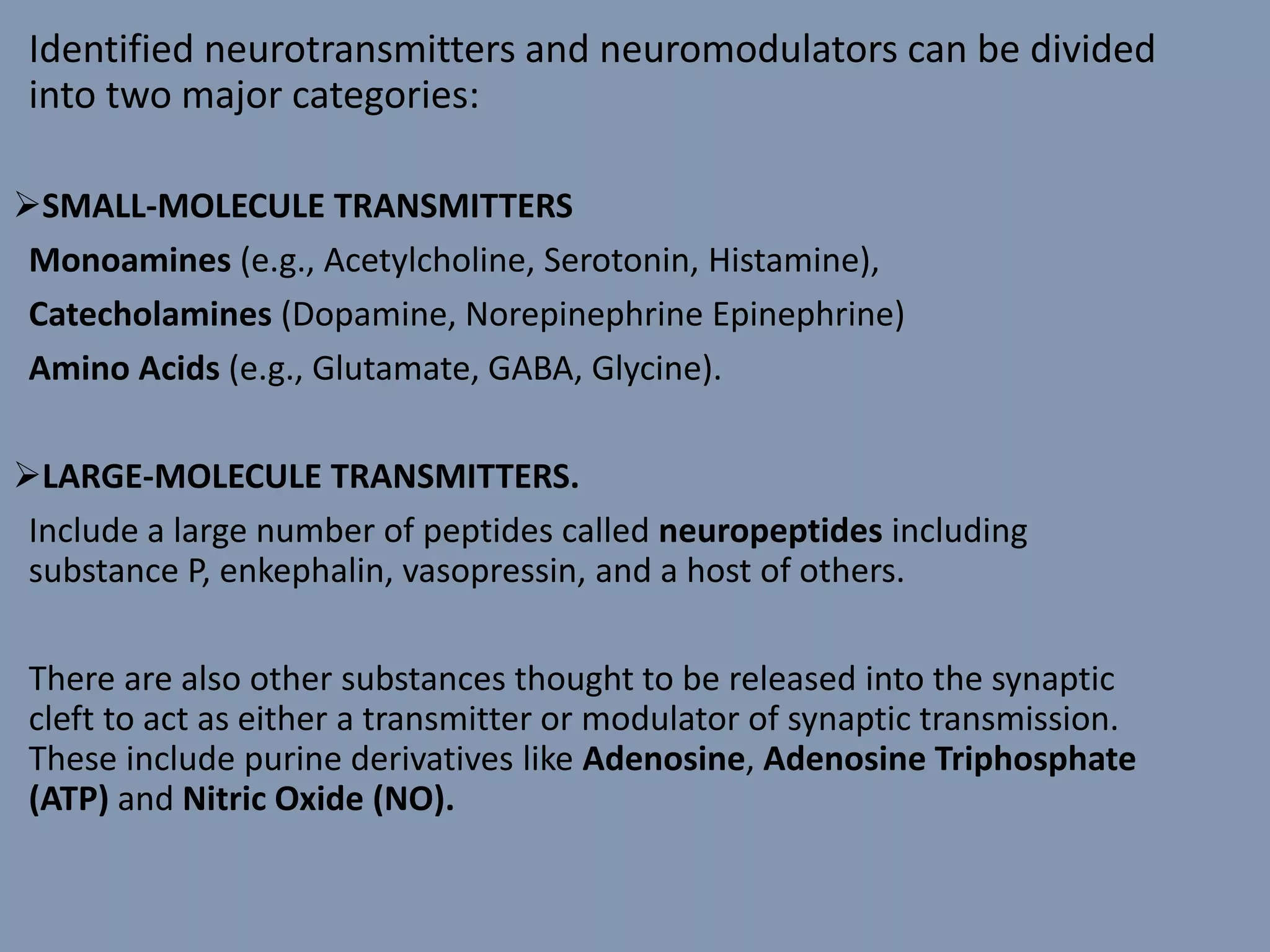Neurotransmitters are endogenous chemicals that transmit signals between neurons. The major categories are small-molecule neurotransmitters like acetylcholine and amino acids, and large peptides. They act on ligand-gated ion channels or G protein-coupled receptors. After release, they are typically removed from the synapse by reuptake back into the presynaptic neuron or breakdown by enzymes. Examples include acetylcholine, which activates nicotinic and muscarinic receptors, and glutamate, the main excitatory neurotransmitter in the brain. GABA is the primary inhibitory neurotransmitter and binds GABAA/B/C receptors. Neuropeptides are longer amino acid chains that modulate synaptic transmission.
























